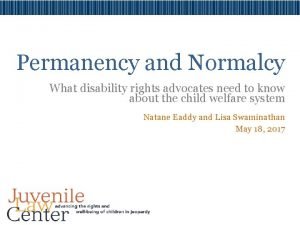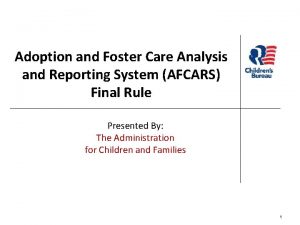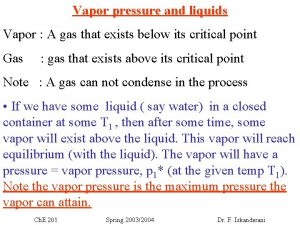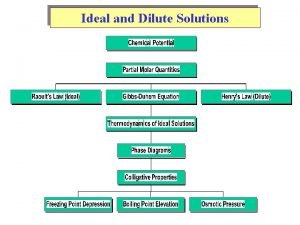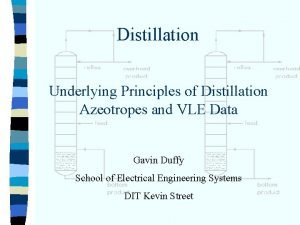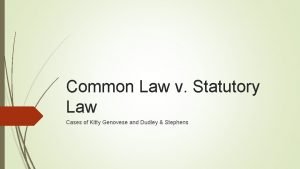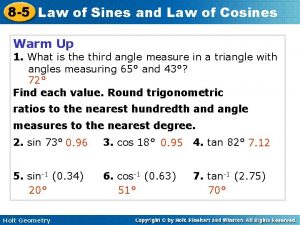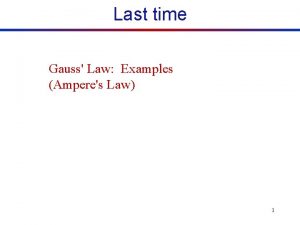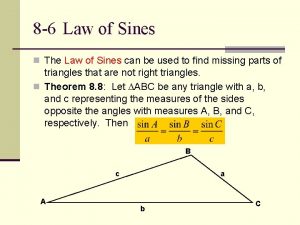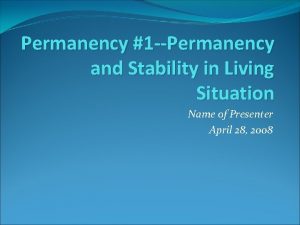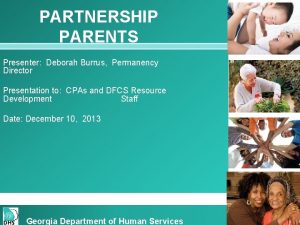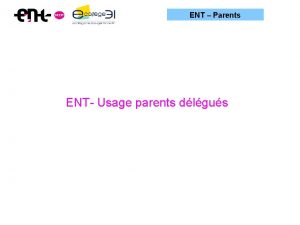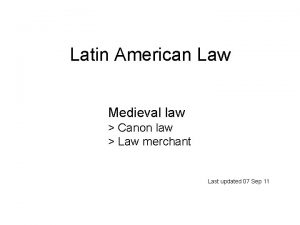Permanency Foster Parents and the Law Permanency Foster



































































- Slides: 67

Permanency, Foster Parents and the Law Permanency, Foster Parent Roles and the Law A production of National Foster Parent Association American Bar Association & Legal Advocates for Permanent Parenting

Permanency, Foster Parents and the Law National Foster Parent Association Legal Resource Manual for Foster Parents Produced by National Foster Parent Association American Bar Association Center on Children and the Law Legal Advocates for Permanent Parenting Child Welfare League of America

Permanency, Foster Parents and the Law National Foster Parent Association Legal Resource Manual for Foster Parents Chapter 1…. . Permanency , Foster Parents and the Law Chapter 2…. . Dependency Court and Removal of Children Chapter 3…. . Court Participation for Foster Parents Chapter 4…. . Allegations of Maltreatment

Permanency, Foster Parents and the Law LEARNING OUTCOMES Ø Identify how federal law affects child welfare Ø Identify the key federal laws which govern child welfare Ø Discuss key areas of ASFA most directly related to how cases are handled in court Ø Identify the five options to be considered in a permanency plan and the role of the foster parent in each Ø Define the federal review process, how it is accomplished and how it affects foster parents

Permanency, Foster Parents and the Law You should know a little about me.

Permanency, Foster Parents and the Law Why SHOULD foster parents become actively involved in agency and court processes? Ä To learn about the process and have a better understanding of how and when to speak up or take action Ä To provide others in the system an opportunity to get used to hearing from foster parents on a regular basis Ä To benefit the court, agency and children Ä To become a better advocate for children in care Ä To improve foster parent presence in the courtroom, thereby making other professionals more willing to hear the foster parent’s point of view

Permanency, Foster Parents and the Law Why DON’T foster parents become actively involved in agency and court processes? ÄSometimes they are expressly excluded ÄTheir own fears, beliefs or prejudices about the system ÄFear of being reprimanded or misunderstood

Permanency, Foster Parents and the Law Focus of Today’s Training: Ø Federal laws pertaining to permanency Ø Active role foster parents can, and should, play in the permanency process Ø Basics of the Adoption and Safe Families Act (ASFA)

Permanency, Foster Parents and the Law Outcome #1: How Federal Law Affects Child Welfare Ø Federal law sets forth requirements which all states must follow in order to receive federal funding. Ø Federal law CANNOT directly control state child welfare programs except through funding incentives and penalties. Ø States enact their own laws and write their own regulations which reflect the federal law. Ø Courts interpret the law through cases that come before them.

Permanency, Foster Parents and the Law Outcome #2: Identify the Key Federal Laws which Govern Child Welfare Ø Adoption Assistance and Child Welfare Act of 1980 (PL 96 -272) Ø Adoption and Safe Families Act (ASFA) Ø Indian Child Welfare Act (ICWA)

Permanency, Foster Parents and the Law PL 96 -272 Adoption Assistance and Child Welfare Act of 1980 Æ Came about as a result of congressional concern that middle class social workers were too quick to remove children from homes that did not meet middle class standards Æ Requires reasonable efforts to prevent removal Æ Requires ongoing reasonable efforts to reunify Æ Court order authorizing removal must contain finding that continuance in the home is contrary to the child’s welfare

Permanency, Foster Parents and the Law Adoption and Safe Families Act (ASFA) ÄEnacted in 1997 ÄA reaction to stories of children languishing in the foster care system without permanency in their lives ÄStates enacted their own statutes to conform to ASFA

Permanency, Foster Parents and the Law Outcome #3: Identify Three Key Areas of ASFA Directly Related to How Cases are Handled in Court 1. No reasonable efforts to reunify, in some cases 2. Mandatory filing of TPR 3. Permanency hearings

Permanency, Foster Parents and the Law Activity: ASFA Ø Form three small groups. Ø Select a recorder. Ø Read through the information on the handout given to you. Ø As a group, select the major points about your topic to share with the other groups. Ø Record your key points on chart paper to present.

Permanency, Foster Parents and the Law NO Reasonable Efforts Agencies may be relieved, by a court order, of the duty to make reunification efforts under three circumstances, or grounds…

Permanency, Foster Parents and the Law NO Reasonable Efforts 1. When aggravated circumstances are present -- Not defined, specifically, in ASFA. --Definition is left up to each individual state 2. When certain crimes have been committed --Conviction must be in a criminal court

Permanency, Foster Parents and the Law NO Reasonable Efforts 3. When the parent’s rights to another child have been previously terminated --Does not apply to voluntary relinquishment of rights --If the foster parent learns that another child of a parent has been freed for adoption through Termination of Parental Rights (TPR) the foster parent should communicate that to the agency.

Permanency, Foster Parents and the Law NO Reasonable Efforts Agency MAY seek to reunify, despite the above exceptions to reasonable efforts. The law does not mandate that NO reasonable efforts be made, it merely identifies circumstances in which it is not necessary to do so. The court makes the final decision about whether reasonable efforts to reunify need to be made…or not.

Permanency, Foster Parents and the Law Mandatory Filing of Termination of Parental Rights Petition (TPR) The agency is required to file a petition to terminate parent rights when a child has been in foster care for 15* out of the most recent 22 months unless one of three exceptions apply. It is the choice of the agency whether to apply one of the exceptions. *Some states require a TPR filing before 15 months. Filing may occur before 15 months, if state law allows.

Permanency, Foster Parents and the Law Exceptions to Mandatory Filing of TPR 1. The child is placed with a relative 2. The agency is not required to free a child for adoption when placed with a relative, but they may, if adoption is the best plan for the child.

Permanency, Foster Parents and the Law Exceptions to Mandatory Filing of TPR 2. The agency cannot provide the services it has deemed necessary to reunify the child This exception is applicable only when the agency, and not another party, has found it cannot provide the service it has deemed necessary for reunification to take place.

Permanency, Foster Parents and the Law Exceptions to Mandatory Filing of TPR 3. There are compelling reasons • “Compelling reasons” are not defined by ASFA, but must be case and child specific • May be subject to judicial review in some states • If no judicial review is required, the agency makes the final decision

Permanency, Foster Parents and the Law Mandatory Filing of Termination of Parental Rights Petition (TPR) • There are deadlines for filing, but not for the court hearing Foster parent role: Provide reminders to the agency and the court of the importance of moving the case along because of the attachments being formed by the child, the problem of changing schools, friends, etc. The child’s attorney may be able to speed up a case on appeal by filing motions to oppose extensions or seeking other means to expedite it.

Permanency, Foster Parents and the Law Permanency Hearing Ø New type of hearing required by ASFA Ø Must be held within 12 months of child’s entry into foster care and every 12 months thereafter, though some states may require more frequent reviews

Permanency, Foster Parents and the Law Permanency Hearings are NOT ü Paper reviews ü Out of court proceedings ü Mere stipulations The intent is to provide a meaningful review by the court, with all parties present. ASFA does not require that formal testimony be taken. The process varies from state to state and even within jurisdictions.

Permanency, Foster Parents and the Law Purpose of the Hearing: To Choose the Permanency Plan Foster Parent Role: No funding is allotted to the court by ASFA, so time is frequently short. Information that the foster parent will want to share with the court to help inform its opinion should be both pertinent and concise. Future training modules provide specifics on sharing information with the court.

Permanency, Foster Parents and the Law Outcome #4: Identify the Five Options to be Considered in a Permanency Plan 1. Reunification 2. Adoption 3. Guardianship 4. Placement with a Fit and Willing Relative 5. Another Planned Permanent Living Arrangement (APPLA)

Permanency, Foster Parents and the Law The hearing decides which plan is adopted, and the judge needs current and complete information Foster Parent Role: To provide information to the agency and the court including their own observations, as well as information obtained from therapists, teachers, caseworkers, school guidance counselors, etc.

Permanency, Foster Parents and the Law Concurrent Planning (Exploring more than one permanency plan at a time) q. Becoming accepted as a best practice q. Moves child more quickly to permanency q. Judge need approve only one plan q. Agency should make intentions known concerning other plans to the parties, including the child.

Permanency, Foster Parents and the Law Activity #2: Permanency Options Ø Form five small groups. Ø Each group select a recorder. Ø Read through the handout on one of the five permanency options. Ø As a group, select the major points about your topic to share with the other groups. Ø Record your key points on chart paper to present to the other groups.

Permanency, Foster Parents and the Law Summary: Reunification Ø Plan most favored by ASFA Ø Judge should rule reunification out before considering another plan Ø Extending the reunification period beyond 12 months can be considered if the parent is working diligently on the plan Ø Safety is the most important consideration

Permanency, Foster Parents and the Law Reunification Foster Parent Role: To provide helpful information about the child to the court such as… Ø Ø Ø Ø Maturity level, able to ask for help if neglect or abuse should recur Child’s ability to feed him or herself Independence or ability to be alone for extended periods of time Need for routine and consistency Special medical or educational needs Degree of bonding with the birth parent Attachments with foster parents or other caregivers The case plan may or may not have been sent to court, depending upon the state, so foster parent input in the hearing is important.

Permanency, Foster Parents and the Law Adoption Ø Second preferred option Ø Considered unless reunification is certain Ø Identification of a perspective adoptive family should be done prior to TPR to avoid the “legal risk” category Foster Parent Role: Ø Work with the agency on reunification Ø Make intentions known about willingness to provide a permanent home

Permanency, Foster Parents and the Law Open Adoption Ø Allows for some contact between the child and the birth parents Ø Not allowed by all states Ø Open adoption agreements can be hard to enforce Ø Foster parents may want to consult with an attorney before entering into such an agreement

Permanency, Foster Parents and the Law Adoption Subsidy Ø Foster parents are advised to explore this with an attorney due to the complexity of subsidy rules. Ø Adoption subsidies CAN, depending on the state, be negotiated. They include such things as counseling, special services and one-time court and legal fees.

Permanency, Foster Parents and the Law Guardianship Ø Desirable when there is someone to care for the child, but adoption has been ruled out Ø Definition: “A judicially created relationship between child and guardian which is intended to be permanent and self-sustaining as evidenced by the transfer to the guardian of certain parental rights with regard to the child. ” Ø Child cannot be returned to the child’s birth parents without court consent.

Permanency, Foster Parents and the Law Guardianship: Grants Parental Rights & Responsibilities Ø Protection Ø Education Ø Care and control of the person Ø Custody of the person Ø Decision making

Permanency, Foster Parents and the Law Guardianship Disadvantages Ø More easily undone than adoption Ø Lack of financial help for guardian family ü Agencies may have funds to continue services ü Court may order agencies to provide services Foster Parent Role: Inform the agency and the court if you feel certain services need to be continued for a child going into guardianship

Permanency, Foster Parents and the Law Placement with a Fit and Willing Relative Ø May decrease child’s anxiety Ø Decisions should not be based upon assumptions, either positive or negative Ø Motivations of relatives need to be known…to avoid a TPR, family pressure, attachment… Ø Court needs to clearly understand the child’s bonds and attachments in the current placement

Permanency, Foster Parents and the Law Another Planned Permanent Living Arrangement (APPLA) Ø Least preferred living arrangement Ø Long term foster care not an option under ASFA Ø May be chosen only if agency has documented compelling reasons based on child’s unique situation Ø Cannot be used as a “catch-all. ” Must be a deliberate, thoughtful plan to meet a child’s unique needs and situation

Permanency, Foster Parents and the Law APPLA Examples: Ø Older teen who requests emancipation Ø Child with significant bond to parents who are unable to care for him and whose foster parents have committed to raising the child to majority and facilitating communication with the birth parents Ø A Native American tribe has identified an APPLA Examples give guidance only. APPLA is not to be applied to broad groups of children, only on a case by case basis.

Permanency, Foster Parents and the Law APPLA Ø Should include services and supports Ø Connections need to be sought with supportive adults in the community Foster Parent Role: Ø Must commit to raising the child until adulthood, if providing APPLA Ø Notify the agency and court of any longterm needs required for extra support or services

Permanency, Foster Parents and the Law The Indian Child Welfare Act (ICWA) q. Imposes additional requirements for Native American children ØAgency must provide notice to tribe when a child is placed in foster care ØMore stringent requirements to TPR q. Foster parents who become aware a child may have some Native American heritage should make the agency and court aware as soon as possible

Permanency, Foster Parents and the Law Outcome #5: Define the Federal Review Process, Why it is Done, How it is Accomplished and How it Affects Foster Parents Ø Two major federal reviews üIV-E Review-to assess PL 96 -272 compliance üChild and Family Service Review (CFSR)- to assess ASFA compliance

Permanency, Foster Parents and the Law IV-E Review Ø Largely a paper review Ø Auditors examine files to be sure IV-E eligibility requirements have been met and judicial findings documented so that funding can be retained. For more information: www. acf. hhs. gov/programs/cb/cwrp/index. htm

Permanency, Foster Parents and the Law Child and Family Service Review Ø Outcome driven and very comprehensive Ø Reviews were started in 2001 and all 50 states will be completed by the end of 2004 Ø Measures safety, permanency and well-being of children in care, which reflects the stability and security of the child’s placement

Permanency, Foster Parents and the Law CFSR Process Ø Involves discrete steps: ü Data sharing ü State’s own report ü On-site reviews, including stakeholder interviews ü Federal rating of the state ü Program Improvement Plan (PIP)

Permanency, Foster Parents and the Law CFSR Process Ø On-site Reviews ü 3 sites, including the largest metropolitan area ü Teams contain federal and state reviewers ü Files reviewed ü Interviews of case participants ü Stakeholder interviews conducted to learn more about how the system is operating… in fact. Stakeholders are those who have contact with the child welfare system, including foster parents.

Permanency, Foster Parents and the Law Federal Rating of the State Ø States are rated in the areas of child safety, permanence and well-being. Ø Stakeholders are interviewed about ü training, ü recruitment of foster and adoptive parents, ü provision of services, etc.

Permanency, Foster Parents and the Law Program Improvement Plan (PIP) Ø States must write a PIP in all areas where deficiencies were noted Ø The PIP period is two years, after which a second review will be conducted. If improvement in outcome is not shown, the federal government will penalize the state. Ø Each state has one or more persons or a committee set up to make sure the state is on track with implementation of the PIP.

Permanency, Foster Parents and the Law Foster Parent Role: It may be advantageous for foster parent associations to become involved in the process as stakeholders. Foster parent associations may wish to reach out to the state liaison in order to become part of this planning team, or to give input as a stakeholder.

Permanency, Foster Parents and the Law Changing Role of Foster Parents 1. Contractual Role Past: To provide services in exchange for money Present: Respected professionals who work together with other system professionals in the best interest of children

Permanency, Foster Parents and the Law Changing Role of Foster Parents 2. Information Source Past: Information gatherers Present: Foster parents valued for their unique insights. Perspective sought out and integrated into decision making, as required by federal law and regulation.

Permanency, Foster Parents and the Law Changing Role of Foster Parents 3. Participant in Reunification Plan Past: Unclear expectations Present: Relationship with birth parents focused on working together for the child’s well-being. They should have a systematic way of reporting information and be valued as a potential permanent resource for the child.

Permanency, Foster Parents and the Law Changing Role of Foster Parents 4. Care Giving Past: Caretaker of basic needs Present: Provider of quality, comprehensive parenting, including advocating for needed services, supervising homework…

Permanency, Foster Parents and the Law Family to Family Ø National program of the Annie E. Casey Foundation Ø Places major emphasis on encouraging agencies to make foster parents part of the team Ø Currently sites in 35 states Ø Innovative programs involve including foster parents on hiring committees for case managers and using foster parents as trainers for other foster parents and case management staff.

Permanency, Foster Parents and the Law Government and Private Initiatives… …underway across the country reflect a growing holistic approach to making foster care better for children. That approach recognizes that we cannot separate the well being of children from the quality of their placements. Foster parents should gain confidence from knowing that when they take an active role, for example, by advocating for better services, or increasing the court’s awareness of the child’s needs, they are part of a larger movement that is beginning to recognize their own importance in the system.

Permanency, Foster Parents and the Law Impact of CFSR’s 1. Outcomes related to foster parents --Foster parent recruitment and retention --Foster parent training --Foster parent input and involvement --Addressing the unmet needs of foster parents --Notice and opportunity to be heard 2. Most of the states have had to address foster parent issues in their Program Improvement Plans (PIP’s)

Permanency, Foster Parents and the Law IN SUMMARY

Permanency, Foster Parents and the Law Impact of Federal Legislation on Child Welfare Programs q Sets forth requirements all states must follow to receive federal funding q Compliance audits bring about changes at the state level to improve child welfare programs

Permanency, Foster Parents and the Law Key Federal Laws Which Govern Child Welfare: q Adoption Assistance and Child Welfare Act of 1980 (PL 96 -272) q Adoption and Safe Families Act (ASFA) enacted in 1997 q Indian Child Welfare Act (ICWA)

Permanency, Foster Parents and the Law Three Key Areas of ASFA Directly Related to How Cases are Handled in Court: q. NO reasonable efforts, in some cases q. Mandatory filing (TPR) q. Permanency hearings

Permanency, Foster Parents and the Law Five Options to be Considered in a Permanency Plan: q q Reunification Adoption Guardianship Placement with a Fit and Willing Relative q Another Planned Permanent Living Arrangement (APPLA)

Permanency, Foster Parents and the Law Federal Review Process and How it Affects Foster Parents * IV-E Review * Child and Family Service Review (CFSR) Outcomes Related to Foster Parents: ØFoster parent recruitment and retention ØFoster parent training ØFoster parent input and involvement ØAddressing the unmet needs of foster parents ØNotice and opportunity to be heard

Permanency, Foster Parents and the Law Changing role of foster parents: Courts and agencies should welcome information from foster parents in order to meet the child’s health, safety and well-being needs. Fortunately, there is a growing recognition that foster parents have a significant part to play in child welfare cases.

Permanency, Foster Parents and the Law Additional modules in this series: üDependency Court and Removal of Children üCourt Participation for Foster Parents üAllegations of Maltreatment

Permanency, Foster Parents and the Law Thank you for your attention and participation
 Permanency plan example
Permanency plan example Frida kahlo peinture famille
Frida kahlo peinture famille Parents parents
Parents parents Fiche artiste frida kahlo
Fiche artiste frida kahlo Newton's first law and second law and third law
Newton's first law and second law and third law Newton's first law and second law and third law
Newton's first law and second law and third law Boyle's law charles law avogadro's law
Boyle's law charles law avogadro's law Avogadro's law constants
Avogadro's law constants Adoption and foster care analysis and reporting system
Adoption and foster care analysis and reporting system Hát kết hợp bộ gõ cơ thể
Hát kết hợp bộ gõ cơ thể Slidetodoc
Slidetodoc Bổ thể
Bổ thể Tỉ lệ cơ thể trẻ em
Tỉ lệ cơ thể trẻ em Gấu đi như thế nào
Gấu đi như thế nào Thang điểm glasgow
Thang điểm glasgow Chúa sống lại
Chúa sống lại Môn thể thao bắt đầu bằng từ đua
Môn thể thao bắt đầu bằng từ đua Thế nào là hệ số cao nhất
Thế nào là hệ số cao nhất Các châu lục và đại dương trên thế giới
Các châu lục và đại dương trên thế giới Công thức tính độ biến thiên đông lượng
Công thức tính độ biến thiên đông lượng Trời xanh đây là của chúng ta thể thơ
Trời xanh đây là của chúng ta thể thơ Mật thư tọa độ 5x5
Mật thư tọa độ 5x5 Làm thế nào để 102-1=99
Làm thế nào để 102-1=99 độ dài liên kết
độ dài liên kết Các châu lục và đại dương trên thế giới
Các châu lục và đại dương trên thế giới Thể thơ truyền thống
Thể thơ truyền thống Quá trình desamine hóa có thể tạo ra
Quá trình desamine hóa có thể tạo ra Một số thể thơ truyền thống
Một số thể thơ truyền thống Cái miệng nó xinh thế chỉ nói điều hay thôi
Cái miệng nó xinh thế chỉ nói điều hay thôi Vẽ hình chiếu vuông góc của vật thể sau
Vẽ hình chiếu vuông góc của vật thể sau Nguyên nhân của sự mỏi cơ sinh 8
Nguyên nhân của sự mỏi cơ sinh 8 đặc điểm cơ thể của người tối cổ
đặc điểm cơ thể của người tối cổ Thế nào là giọng cùng tên? *
Thế nào là giọng cùng tên? * Vẽ hình chiếu đứng bằng cạnh của vật thể
Vẽ hình chiếu đứng bằng cạnh của vật thể Vẽ hình chiếu vuông góc của vật thể sau
Vẽ hình chiếu vuông góc của vật thể sau Thẻ vin
Thẻ vin đại từ thay thế
đại từ thay thế điện thế nghỉ
điện thế nghỉ Tư thế ngồi viết
Tư thế ngồi viết Diễn thế sinh thái là
Diễn thế sinh thái là Dot
Dot Số.nguyên tố
Số.nguyên tố Tư thế ngồi viết
Tư thế ngồi viết Lời thề hippocrates
Lời thề hippocrates Thiếu nhi thế giới liên hoan
Thiếu nhi thế giới liên hoan ưu thế lai là gì
ưu thế lai là gì Sự nuôi và dạy con của hươu
Sự nuôi và dạy con của hươu Sự nuôi và dạy con của hổ
Sự nuôi và dạy con của hổ Sơ đồ cơ thể người
Sơ đồ cơ thể người Từ ngữ thể hiện lòng nhân hậu
Từ ngữ thể hiện lòng nhân hậu Thế nào là mạng điện lắp đặt kiểu nổi
Thế nào là mạng điện lắp đặt kiểu nổi Vsc 80
Vsc 80 Foster freeman vsc 80
Foster freeman vsc 80 Foster and maintain business relationships
Foster and maintain business relationships How are similarities passed from parent to offspring
How are similarities passed from parent to offspring Raoult's law and dalton's law
Raoult's law and dalton's law Difference between civil law and criminal law
Difference between civil law and criminal law Law of sines sss
Law of sines sss Distillation presentation
Distillation presentation Criminal law plaintiff
Criminal law plaintiff Raoult's law and dalton's law
Raoult's law and dalton's law Raoult's law vs dalton's law
Raoult's law vs dalton's law Difference between common law and statute law
Difference between common law and statute law Doctrine of precedent
Doctrine of precedent 8-5 practice law of sines
8-5 practice law of sines The vapor pressure of pure water at 110 c is 1070 torr
The vapor pressure of pure water at 110 c is 1070 torr Amperes law example
Amperes law example 8-6 the law of sines
8-6 the law of sines
